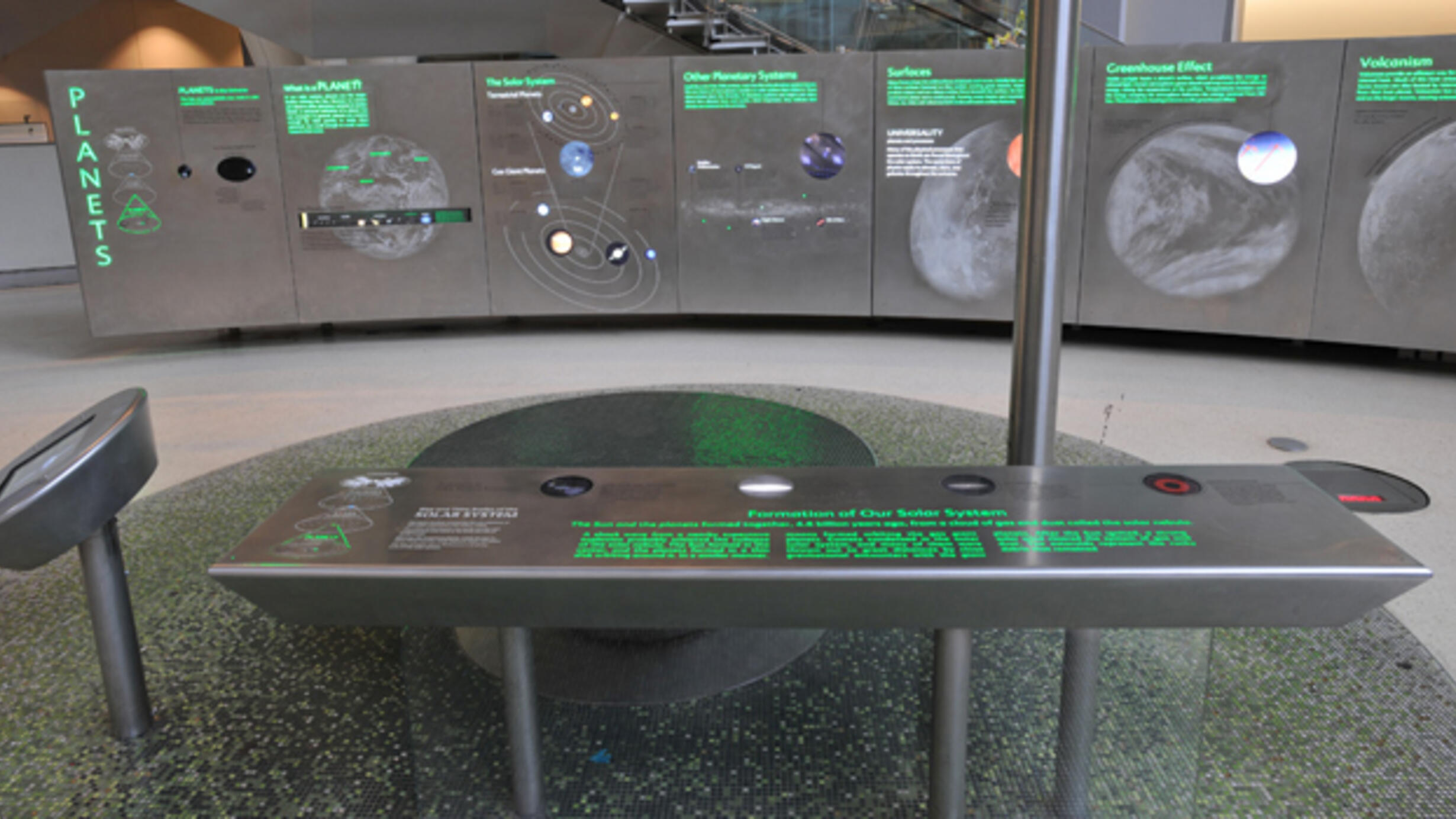Formation of Our Solar System
Part of Hall of the Universe.
 AMNH/D. Finnin
AMNH/D. Finnin The Sun and the planets formed together, 4.6 billion years ago, from a cloud of gas and dust called the solar nebula. A shock wave from a nearby supernova explosion probably initiated the collapse of the solar nebula. The Sun formed in the center, and the planets formed in a thin disk orbiting around it. In a similar manner, moons formed orbiting the gas giant planets. Comets condensed in the outer solar system, and many of them were thrown out to great distances by close gravitational encounters with the giant planets. After the Sun ignited, a strong solar wind cleared the system of gas and dust. The asteroids represent the rocky debris that remained.
Size and Time Scales of the Solar System
The Earth revolves around the Sun at a distance of 150 million kilometers (93 million miles).
The orbits of the planets are nearly circular, and measure from one-third to 30 times the size of Earth's orbit.
Mercury, the innermost planet, orbits the Sun in about three months, while Neptune takes 165 years.
The Sun contains about 99.9 percent of all the mass of the solar system.